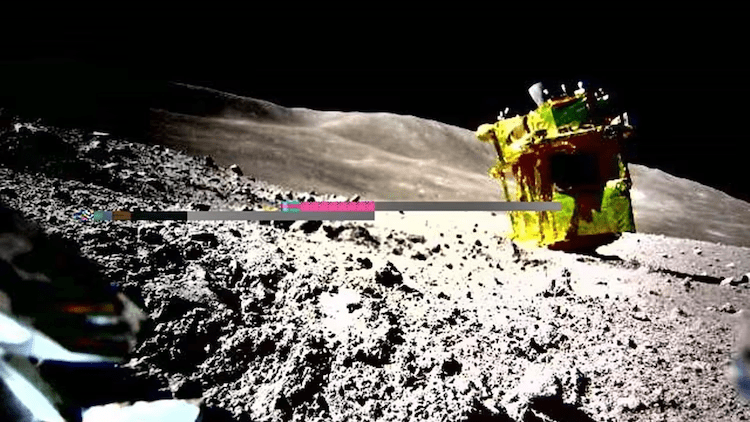25/01/2024
25/01/2024

TOKYO, Jan 25: Japan has successfully transmitted the initial image from its Smart Lander for Investigating Moon (SLIM) on the lunar surface, despite facing challenges in obtaining solar power after landing. Captured by the Lander-eye Viewfinder-1 (LEV-1), the photograph illustrates the precarious approach of the lander on the Moon.
On January 20, 2024, the Japan Aerospace Exploration Agency (JAXA) achieved what they term a "minimum" success with their SLIM spacecraft. Despite unexpected challenges during the landing, the mission has yielded invaluable data and visuals from our celestial neighbor.
The image of the lander, appearing to tilt forward, was taken by LEV-2, ejected to the moon's surface alongside LEV-1 moments before SLIM's touchdown. The picture unveils an unforeseen scenario: SLIM's front rests on the lunar terrain, with its solar panels obstructed, thwarting potential solar power generation and leaving the lander dependent on depleted battery reserves.
Communication between LEV-1 and LEV-2 remain functional, a positive development amid the complications. The images captured by LEV-2 and transmitted to Earth via LEV-1's communication systems offer a clear view of SLIM and its immediate surroundings.
The mission's success now hinges on determining whether the lander achieved the targeted 100-meter landing precision -- a detail requiring months of analysis. The initial descent proceeded without incident until a sudden loss of thrust approximately 50 meters above the lunar surface. Subsequent images revealed the detachment of one of the main engine's nozzles, a critical malfunction that could have spelled disaster.
Fortunately, the redundancy in the spacecraft's design allowed SLIM to continue its descent using only one main engine. While this engineering feat enabled the lander to reach the moon's surface, it couldn't fully counteract lateral movement, resulting in less than optimal orientation upon landing.
Despite these setbacks, the mission is deemed a triumph. JAXA's SLIM now stands among lunar explorers, marking a proud moment for Japan in space exploration and making it the fifth country globally to achieve a Moon landing.


